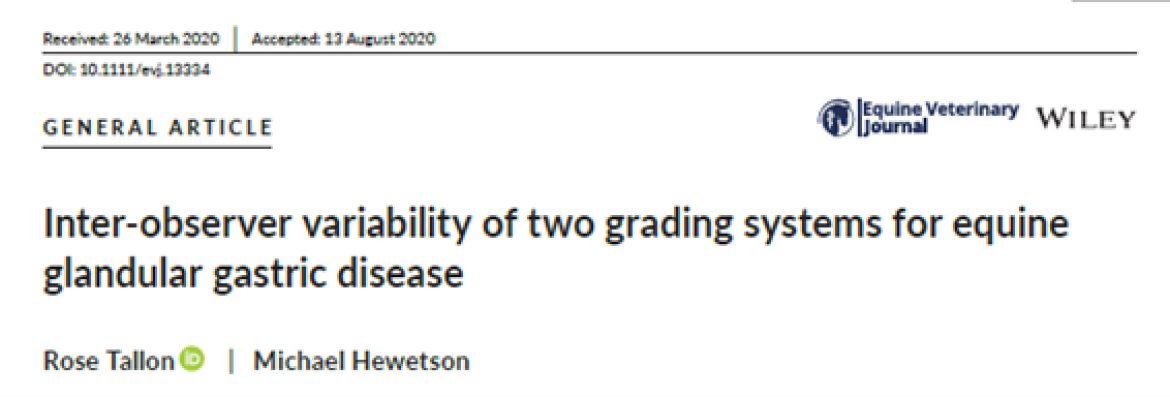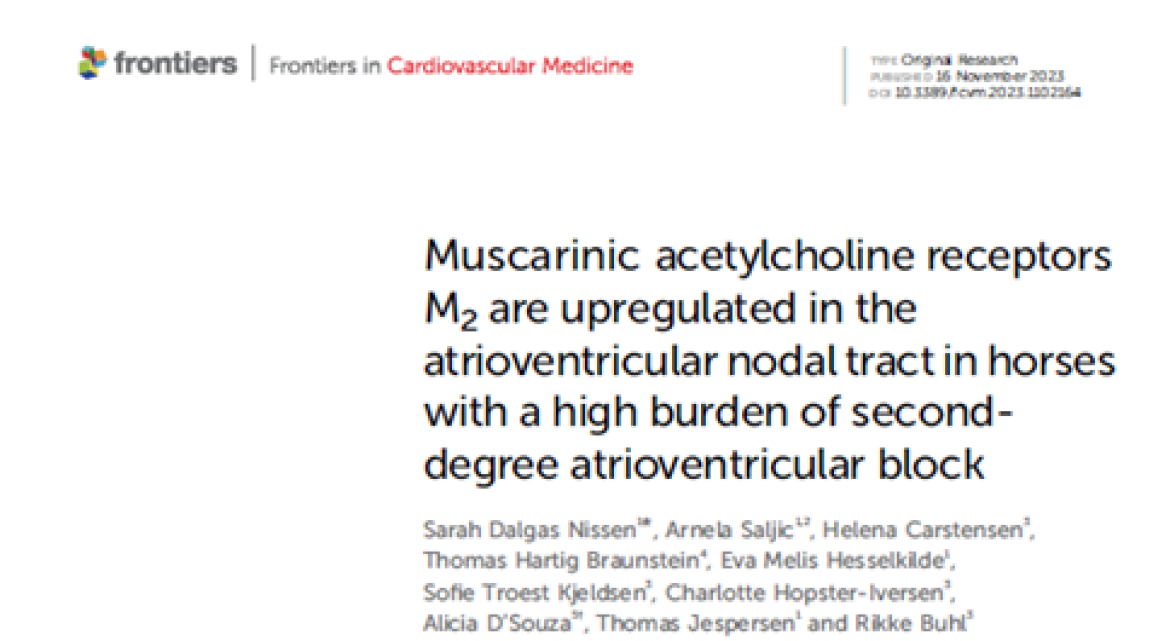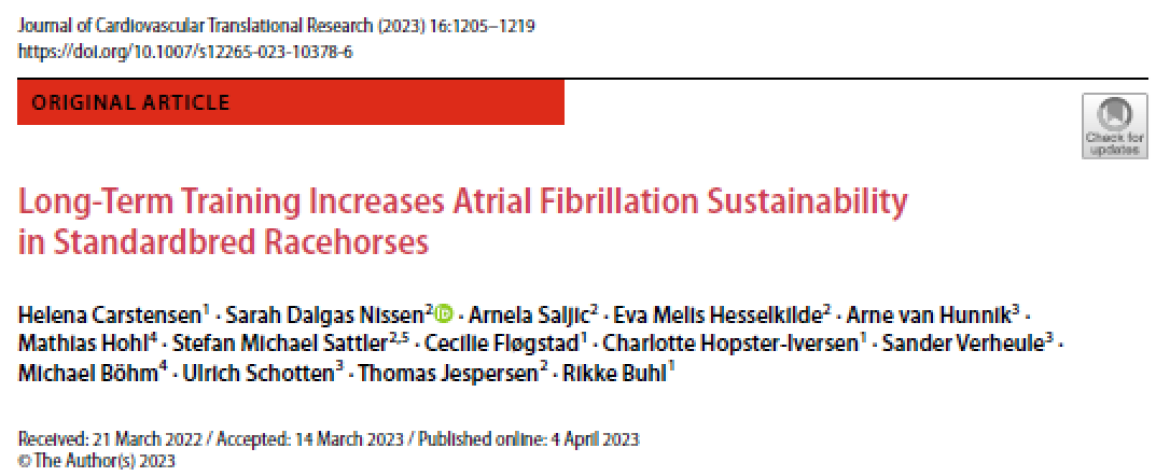
Research
Gastrointestinal

In this study, conducted by the Equine Internal Medicine team at the University of Barcelona, plasma concentrations of ionized magnesium in the plasma of hospitalized horses with systemic inflammatory response syndrome (SIRS) were evaluated. Results showed that horses with obstructive gastrointestinal disorders had a higher prevalence of hypomagnesemia compared to controls. However, unlike human ICU patients, hypomagnesemia in hospitalized horses was not associated with mortality.
https://www.mdpi.com/2076-2615/12/12/1479
https://doi.org/10.3390/ani12121479

The Netherlands-based team, led by Mathijs Theelen continues its research on the effects of antibiotics on intestinal microbiota. This study aimed to investigate the impact of transportation, hospitalization, and trimethoprim-sulfadiazine (TMS) treatment on the fecal microbiota and resistome of healthy equids. Results showed that TMS treatment significantly reduced microbial diversity and led to long-lasting changes in microbiota composition and resistance gene abundance. These findings highlight the importance of judicious antimicrobial use to mitigate the long-term presence and spread of antimicrobial resistance in both animal and human health contexts.
https://microbiomejournal.biomedcentral.com/articles/10.1186/s40168-023-01465-6
https://doi.org/10.1186/s40168-023-01465-6

This prospective case-control study aimed to establish reference ranges for peritoneal bile acid concentration (PBAC) in horses and assess its diagnostic and prognostic value. PBAC levels were significantly higher in horses with hepatic or gastrointestinal disease compared to healthy horses, with the nonsurvivor group showing the highest levels. These findings suggest that PBAC could serve as a diagnostic and prognostic tool for abdominal conditions in horses, although further research with a larger sample size is needed to confirm its clinical significance.
https://beva.onlinelibrary.wiley.com/doi/10.1111/evj.13538
https://doi.org/10.1111/evj.13538

This cross-sectional survey aimed to assess inter-observer reliability of two grading systems for equine glandular gastric disease (EGGD). Results showed fair to moderate agreement among veterinarians, with better agreement observed among diplomates. Lesion appearance and shape, but not distribution, were associated with severity and a decision to treat. Overall, agreement for the descriptive system was poor, suggesting the need for better delineation of descriptive category boundaries and characteristics.
https://beva.onlinelibrary.wiley.com/doi/10.1111/evj.13334
https://doi.org/10.1111/evj.13334
Cardiology

In this intriguing study co-authored by a multidisciplinary team of researchers from Denmark, Germany, and Great Britain, various receptors and channels affecting cardiac vagal tone are examined. Second-degree atrioventricular (AV) block is common in resting horses, often linked to high vagal tone. This study aimed to investigate whether altered expression of vagal signaling effectors, particularly M2 receptor and GIRK4 channel, contributes to AV block in horses. Eighteen horses with low and 17 with high AV block burden were studied. Results showed that horses with AV block had longer PR intervals and Wenckebach cycle lengths, which normalized after autonomic nervous system blockade. Expression of M2 receptor was significantly higher in the AV node of the AV block group compared to controls, while expression of GIRK4 did not differ significantly. Both M2 and GIRK4 were highly expressed in the AV node and less in atria and ventricles.
https://www.frontiersin.org/articles/10.3389/fcvm.2023.1102164/full
https://doi.org/10.3389/fcvm.2023.1102164

This interesting study was conducted by a multidisciplinary team of researchers from Denmark and the Netherlands. It examined AF inducibility and stability in trained and untrained Standardbred racehorses. Echocardiography was used to assess atrial size, while high-density mapping during AF was conducted to analyze structural changes and the expression of inflammatory markers in the atria. Trained horses showed significantly longer sustained AF after tachypacing than untrained ones, but no difference was observed in AF inducibility. Unlike trained horses, untrained horses exhibited a significant discrepancy in AF complexity between their right and left atria. However, there was no evidence of increased structural remodeling or inflammation and in either group left atrial dimensions remained unchanged. The increased AF sustainability in trained horses did not appear to be linked to fibrosis or inflammation, unlike findings in other animal exercise models.
https://link.springer.com/article/10.1007/s12265-023-10378-6
https://doi.org/10.1007/s12265-023-10378-6
Others

This study investigated the effects of topically applied betulinic acid (BA) and its derivative NVX-207 on equine melanocytic tumors. A significant reduction in tumor volume was seen following 91 days of twice daily treatment with 1% BA, compared to placebo treatment from 80 days. Treatment with NVX-207 yielded a non-statistically significant reduction in tumor volume. Further studies using larger cohorts and modified formulations of NVX-207 are required before this treatment can be recommended.
https://www.mdpi.com/2076-2615/11/11/3250
https://doi.org/10.3390/ani11113250

This study investigated the breath alcohol test results of veterinarians performing abdominal ultrasound on horses using ethanol solution. Results showed positive tests for up to 60 minutes post-procedure, with significant differences observed based on the volume of ethanol used. However, the method of ethanol administration did not affect the test outcomes. This suggests that equine vets may test positive for alcohol up to an hour after performing ultrasounds examinations on horses, regardless of how the ethanol was applied.
https://www.mdpi.com/2306-7381/10/3/222
https://doi.org/10.3390/vetsci10030222